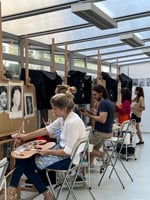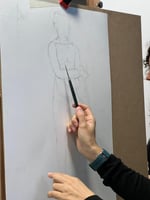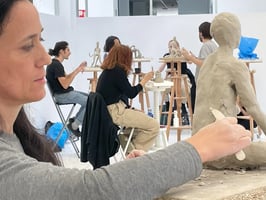Art is a powerful tool that can be used to support and promote cognitive development and cognitive...
Embracing Neurodiversity in Creative Expression

Explore how neurodiversity fuels innovation and uniqueness in the realm of creative arts, offering fresh perspectives and unparalleled originality.
Understanding Neurodiversity and Its Impact on Creativity
The concept of neurodiversity acknowledges the diverse spectrum of brain functions and behavioral traits that characterize the human population. Just as biodiversity is essential for the ecosystem, neurodiversity is crucial for the cultural and intellectual fabric of society. In terms of creativity, neurodiverse individuals often bring a fresh, unconventional perspective to the arts. Their unique way of experiencing the world can lead to innovative problem-solving, original artistic expressions, and the creation of thought-provoking works that challenge the status quo.
Neurodivergent artists may experience heightened sensitivity to sensory inputs, or they may think in highly visual, kinesthetic, or patterned ways. These differences can enable them to see connections and generate ideas that might elude others. From this vantage point, neurodiversity is not just a variation in cognitive functioning; it is a reservoir of untapped creative potential.
Challenges and Triumphs: Neurodivergent Artists in the Spotlight
While neurodivergent individuals often face significant challenges, such as navigating a world designed for neurotypical norms, many have risen to prominence in the arts. Artists with conditions like autism, ADHD, dyslexia, and others have historically contributed to the richness of the arts with their exceptional talents. For instance, some may have an extraordinary focus that allows them to practice and refine their craft tirelessly, often leading to mastery that captivates audiences and critics alike.
The triumphs of neurodivergent artists are not only in their artistic achievements but also in their ability to inspire and educate. By sharing their experiences and their work, they illuminate the beauty of neurodiversity and encourage society to embrace a broader spectrum of human potential. These artists demonstrate that the challenges they face can be transformed into strengths that fuel their creative fire.
Strategies for Supporting Neurodiverse Creativity in the Arts
Supporting neurodiverse creativity requires a multifaceted approach that includes education, accommodation, and advocacy. Educators and mentors in the arts can play a key role by recognizing the unique learning styles of neurodivergent students and adapting their teaching methods accordingly. This might involve individualized instruction, the use of assistive technologies, or creating a more sensory-friendly learning environment.
Institutional support is also vital. Galleries, theaters, and artistic communities can offer programs specifically designed for neurodivergent artists, providing the resources and platforms necessary for them to showcase their work. Additionally, integrating neurodiversity training for staff and promoting awareness can foster an environment where neurodivergent creatives feel valued and understood.
The Role of Technology in Enhancing Neurodivergent Artistic Expression
Technology has been a game-changer for neurodivergent artists, offering tools that complement their unique talents and help overcome some of the barriers they may face. Digital art software, for example, can provide a visual medium that aligns with the strengths of those who think in images or patterns. Music production software can cater to those with an acute sense of hearing or a non-linear approach to composition.
Assistive technologies can also play a supportive role, allowing individuals with motor difficulties to engage with digital interfaces to create art. Social media and online platforms offer a means for neurodivergent artists to share their work with a global audience, bypassing traditional gatekeepers in the art world and fostering a more inclusive and representative art market.
Building Inclusive Communities for Neurodivergent Creatives
Building inclusive communities for neurodivergent creatives is fundamental to nurturing their talents and ensuring their contributions are recognized. This involves creating spaces where neurodiversity is celebrated, and differences are viewed as assets rather than deficits. Collaborative efforts between neurotypical and neurodivergent individuals can lead to a richer, more dynamic art scene.
Art organizations and communities can take active steps to be more inclusive by offering mentorship programs, accessible exhibitions, and networking opportunities that cater to the needs of neurodivergent individuals. Encouraging dialogue and understanding between artists of all neurotypes can lead to a more empathetic and innovative artistic community that values the strengths that come from diversity of thought.



